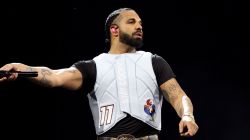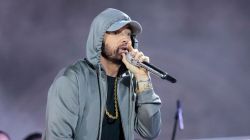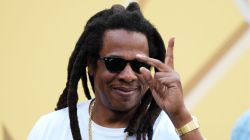Dutch filmmaker Bram Van Splunteren’s 1986 film, Big Fun In The Big Town has one flaw: it’s too short. The documentary is a brilliant impression of the changing tides of both New York City and Hip Hop as the stakes got higher, and so did the people. The film features revealing time-capsule interviews with LL Cool J, Run-DMC, Schoolly D, Doug E. Fresh, Russell Simmons and Grandmaster Flash, all in a moment when artists were brutally sincere in who they were, and film coverage was an exciting validation to a culture still fighting for recognition.
One of Big Fun In The Big Town’s greatest assets is access. Grandmaster Flash welcomes the film back into his home and shows them his possessions at a time when “stunting” had more to do with Lee Majors television shows than ostentatious material goods. LL Cool J welcomes the film crew into his proud grandmother’s house, where the young Queens rapper then lived. The interview takes place on a residential street where passing cars brake for the man who had just released Radio. Rush Simmons and Bill Adler (who is thanked for this film’s formal release) are filmed entering an early Def Jam Records office, with hopefuls rapping out front (a pre-cursor to the “please listen to my demo” days to come). DMC shows off his new customized Cadillac outside a studio, while a frustrated Run ego-trips on a telephone alongside Jam Master Jay years before he was a man of the Cloth. Bram Van Splunteren’s lens was a fly on the wall 25-plus years before flip-cam footage over-supplied the Internet and label reps tried to kill any controversial footage.
As a documentarian, Bram’s questioning gets to the heart of where Hip Hop was at in 1986. A jheri-curled Grandmaster Flash explains its evolution from the ’70s and how the clubs had changed, as Russell breaks down the business acumen necessary to make the culture global. DMC speaks about his affinity for Adidas, claiming that Run-DMC made their hit “My Adidas” without any notion of endorsement from the German brand. However, Bram was also well aware of the emergence of Gangsta Rap, and the lifestyle that drove its content. Schoolly D asserts his reasons for rhyming about his friends smoking crack and abusing women as the crew films urban landscapes at New York’s Avenue D, an East Coast epicenter for crack cocaine sales and consumption in its day. The filmmaker does not interject his own opinion, but asks all the right questions. Few people in 1986 could have seen where Hip Hop would go to, even two years alters. However the subjects and subject matter in Big Fun In The Big Town was spot-on, and beyond relevant to the scope 26 years later.
Like Style Wars or Scratch, Big Fun In The Big Town is a powerful glimpse into one facet of Hip Hop within a moment in time. The performances and the music (including some quality club footage of The Juice Crew) are high-quality, and great rare visuals to songs that never had the budgets for official videos. At 41 minutes long, the film both feels complete but leaves the viewer yearning for more. This is a benchmark in Hip Hop, and a worthy addition to any cultural librarian.










